Lecture 13: Species Interactions
1/17
There's no tags or description
Looks like no tags are added yet.
Name | Mastery | Learn | Test | Matching | Spaced |
|---|
No study sessions yet.
18 Terms
Every species is subjected to natural selection from its biotic environment
Coevolution is the reciprocal genetic change in interacting species, such that evolution in one species causes adaptive change in another species and vice versa.
Coevolution can occur in any intimate species interaction
Intimate species interactions are called Symbioses

For a focal species, coevolution may occur with other species that are its
Resources: species that are eaten or used for habitat.
Competitors: competing for food, space, or habitat.
Enemies: Predators, parasites, etc.
Mutualists: species that provide fitness benefits
traits of one species can shape the traits of other species both in negative interactions (predation, competition, parasitism) and positive interactions (mutualism)
Coevolution can lead to extreme traits in species intensely shaped by other species
When Darwin saw the Orchid species Angraecum
sesquipedale and its extremely long nectar spur he predicted the presence of a pollinator with an extremely long proboscis.Only later was the long- tongued Sphinx Moth discovered by naturalists in Madagascar
Mutualists can evolve over time to match their partners extremely well
Coevolution is reflected by parallel diversification in extreme cases
Aphids are phloem-sucking insects that have bacterial symbionts, Buchnera, that provide the insect with the amino acid Tryptophan
The Buchnera bacteria are vertically transmitted among hosts, meaning that mother aphids pass on their Buchnera symbionts to their offspring
Aphid and Buchnera phylogenies ‘match’ (they are concordant), reflecting divergence events that are shared between the coevolving partners
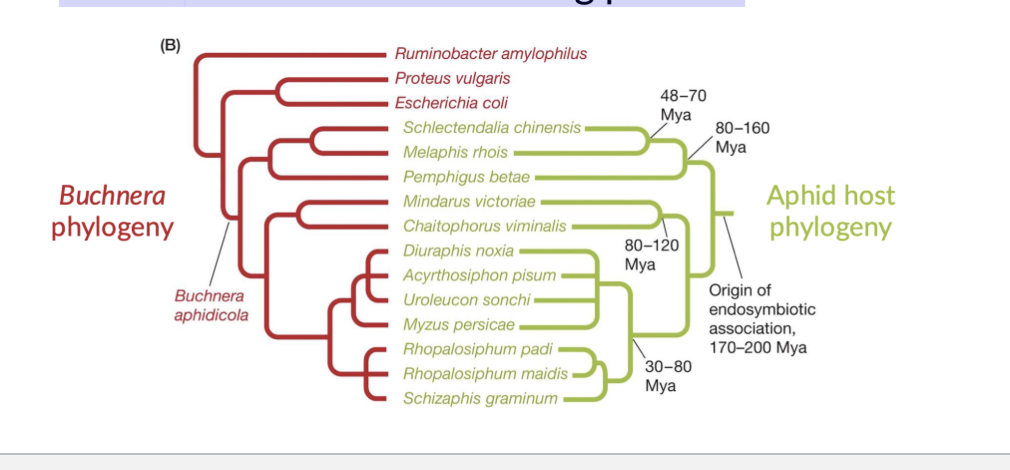
The nature and strength of interactions can vary, affecting coevolution
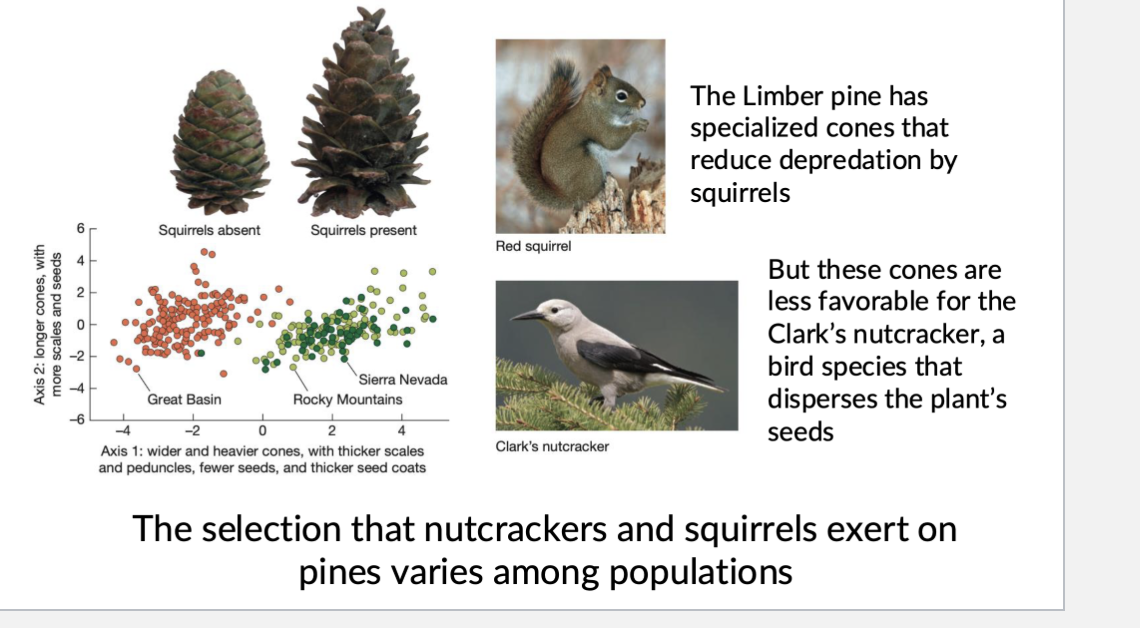
The evolution of enemies and victims
interactions between enemies and victims include predators and prey, parasites and hosts, and herbivores and host plants.
interactions often unstable because enemies can cause the extinction of each other’s populations
Interactions between enemies and victims can lead to arms races in which each species adapts in response to the other and leads to extreme traits.
Predators, parasites, and herbivores evolve extraordinary adaptations to capture prey, infect hosts, and consume plants
Prey, hosts, and plants have elaborate counteradaptations
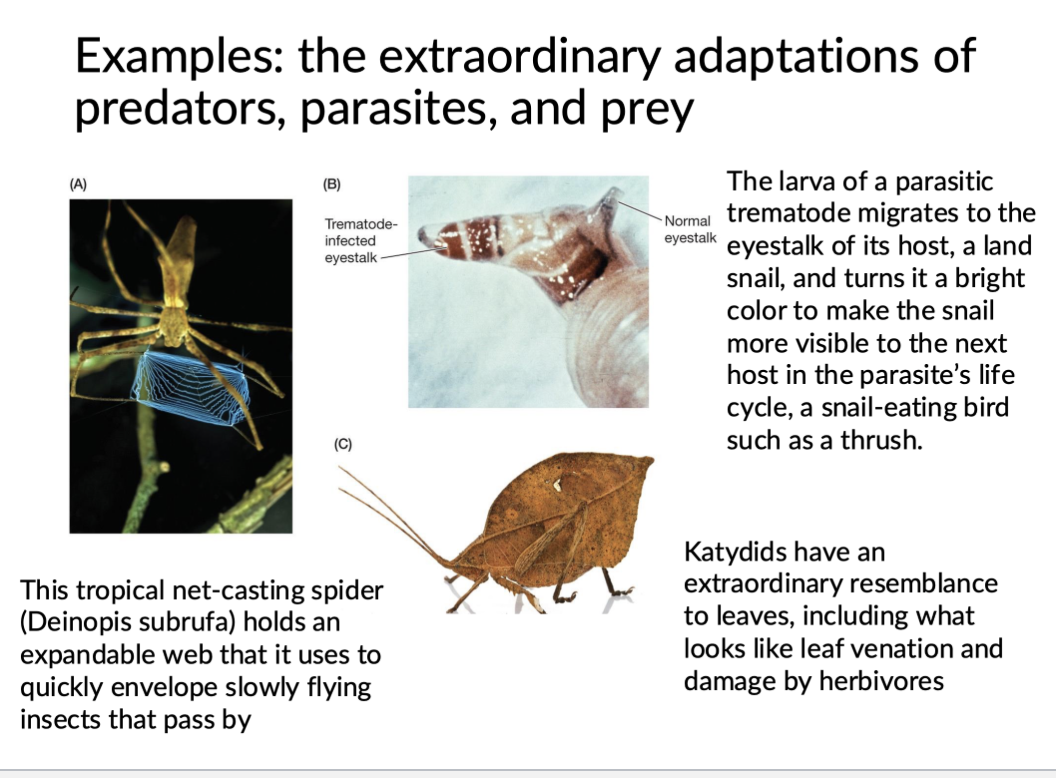
Examples: Prey Defenses
Mimicry = the close resemblance of an organism (the mimic) to some different organism (the model) such that the mimic benefits from the mistaken identity
Diverse animals have evolved warning signal
Sometimes species mimic warning signals
Batesian- An unprotected species (mimic) evolves to look like a protected species (model)
coral snake and milk snake
Müllerian Mimicry- chemically protected species (mimetic #1) evolves to look like another protected species (mimetic #2)
cuckoo bee and yellow jacket
Evolutionary arms races and the Red Queen Hypothesis
Red queen hypothesis- predits that species are constantly being reshaped by interaction with other speices
Each species has to run (i.e., evolve) as fast as possible just to stay in the same place (survive) because interacting species also continue to evolve
Example of an evolutionary arms race: Newts and snakes
Rough-skinned newts (Taricha) are often highly toxic (they produce the neurotoxin TTX) to protect them from predation by the garter snake
toxicity varies from zero toxicity to enough for a single newt to poison about 25,000
ab mice.the garter snake exhibits resistance to TTX toxicity that varies from near zero to extremely high resistance
Highly toxic newt populations are often
paired with highly resistant Garter snakes
Trait matching occurs within populations
This pattern supports the hypothesis that newt and snake traits are evolving reciprocally (i.e., coevolving)
The average level of newt toxicity and snake resistance is not always perfectly matched
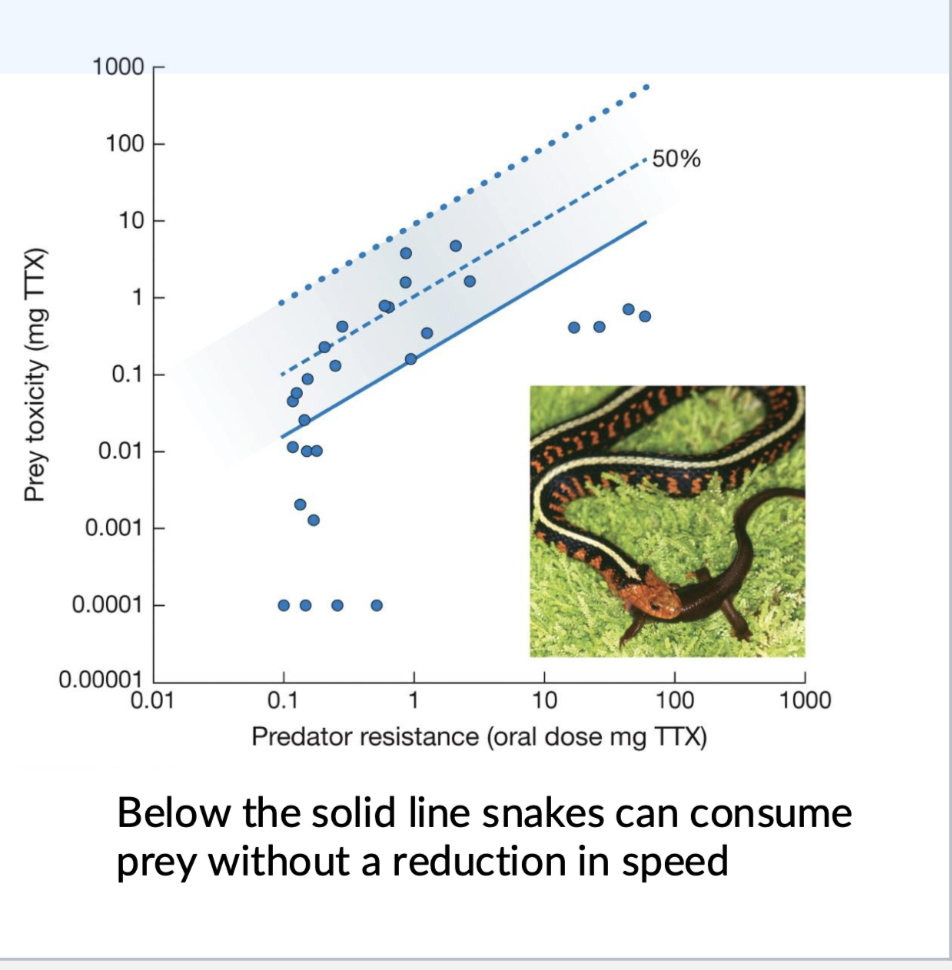
Trait matching is important for some brood-parasitic birds, such as cuckoos
Brood parasites lay their eggs into the nests of other birds.
Some host species can recognize and reject the parasitic eggs
Part of the cuckoo’s strategy to trick the host bird is to lay eggs that match the host’s eggs
Cuckoos have evolved to match their host eggs
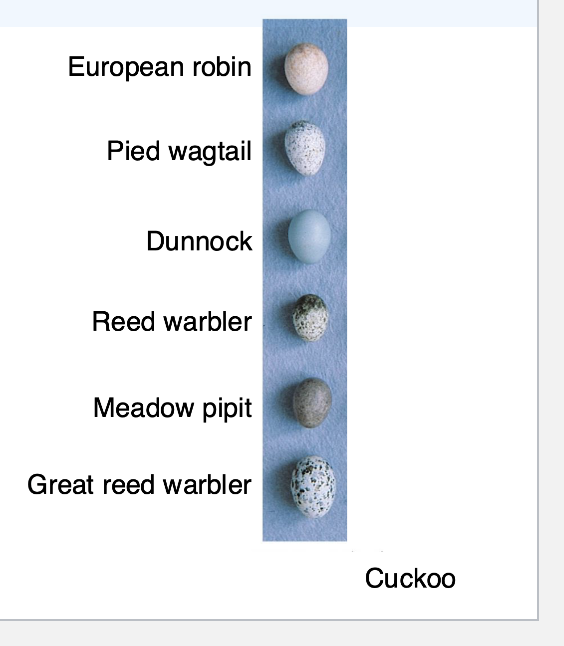
Brooke & Davies experiments (1988)
They traced the fate of artificial cuckoo eggs placed in the nests of different bird species.
Host species that are never parasitized do not reject experimentally placed eggs.
Host populations with a history of parasitism have evolved different mechanisms to reject experimentally placed eggs: pushing them out of the nest, abandoning the nest, or building over them
Cuckoo mimicry and host discrimination have each coevolved with each other
Host-parasite interactions and infectious disease
Virulence is defined as reduction in the survival and reproduction of hosts by a pathogen
Virulence, infectiousness, and host resistance are traits that evolve just like other phenotypes.
The waterflea, Daphnia magna, is often used as a model host to study host-parasite evolution
Daphnia eggs are deposited in lake sediments and survive for decades or longer
Example: Host-parasite coevolution
Decaestecker & colleagues did a ‘resurrection study’ pulling Daphnia and Pasteuria (bacteria) parasites from different sediment layers tested hosts and parasites against each other.
Hypothesis: Pasteuria evolve to optimize infectivity on Daphnia and parasites evolve to increase virulence over time

Mutualisms are based on reciprocal exploitation
Mutualisms are interactions between species that benefit individuals of both species.
However, they do not exemplify altruism, but reciprocal exploitation, in which each species obtains something from the other.
Mutualisms are not always stable over evolutionary time: many species cheat.
this leads to coevolution
Why did the orchid’s nectar tube and the moth’s proboscis become so long?
Natural selection favors:
• Insects with a proboscis long enough to reach the nectar
• Flowers with spur lengths that force insects to press their head deep into flowers and pick up and deposit pollen
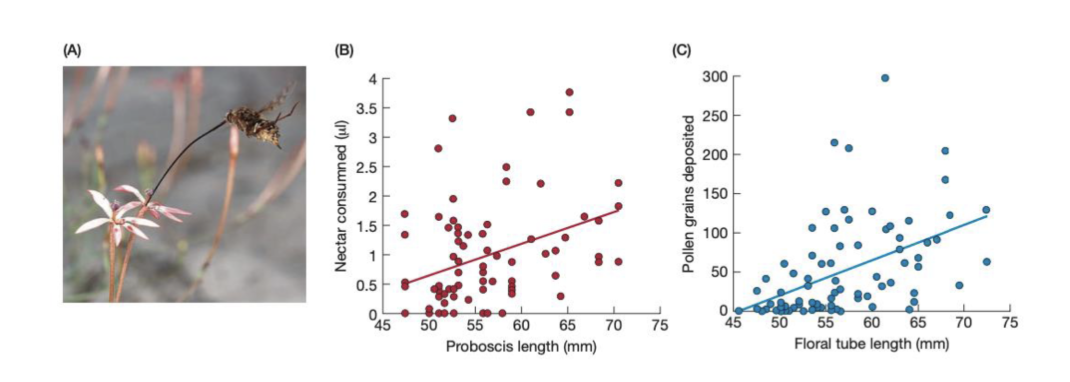
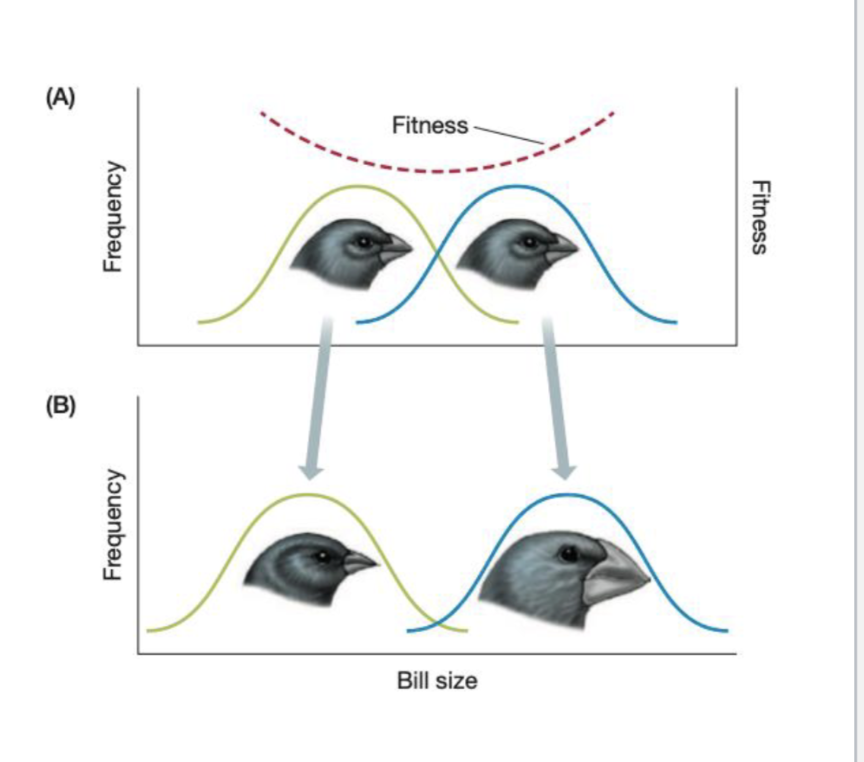
Competition among species may lead to divergence in resource use
Competition for resources occurs within species (intraspecific competition) and between species (interspecific competition).
• Interspecific competition has two major outcomes.
One species is driven to extinction.
Competition imposes selection on one or both species leading to divergence in resource use.
Divergence in response to competition between species is called ecological character displacement.
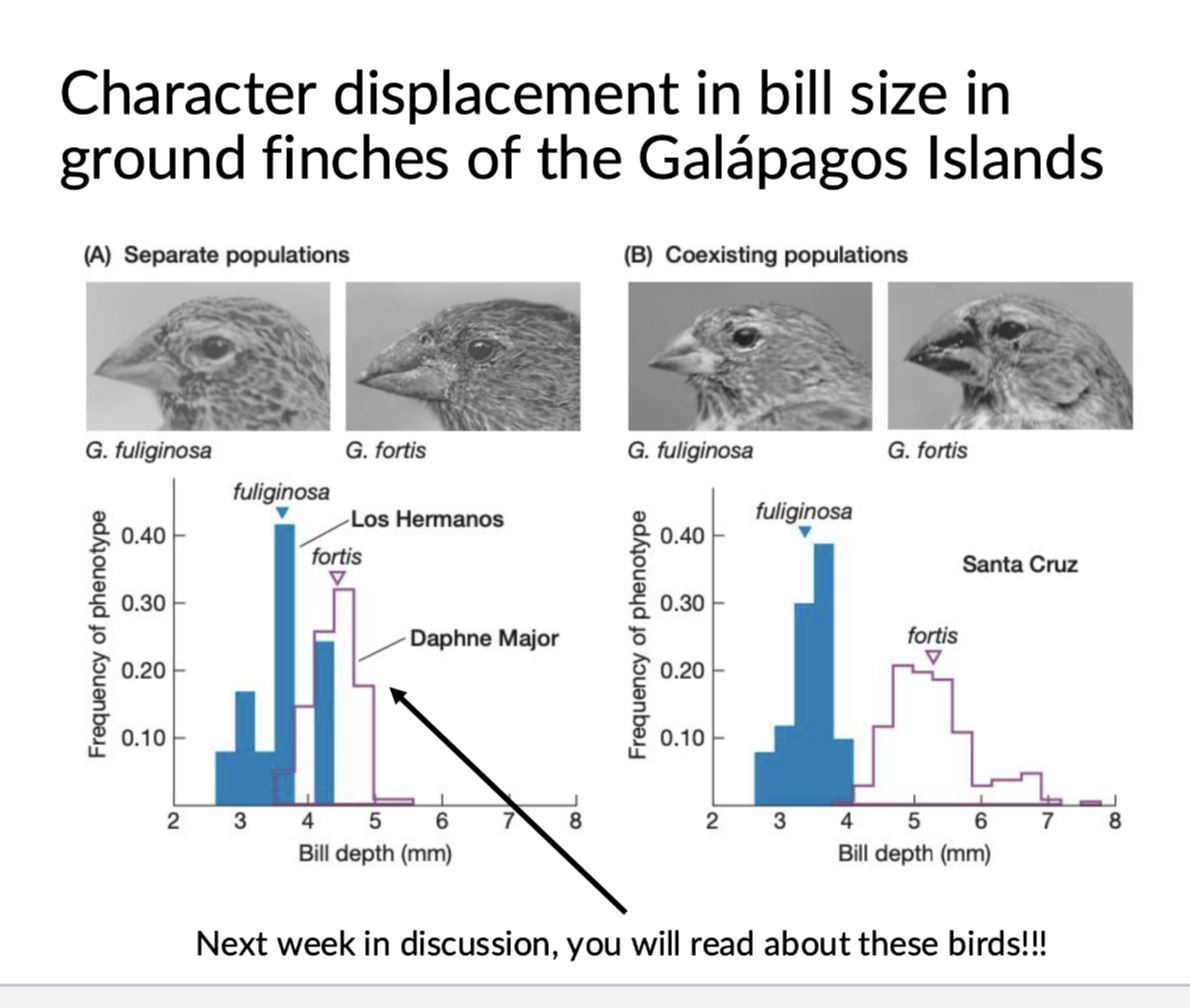
Summary of Lecture 13: Species Interactions
Coevolution is reciprocal evolutionary change in two or more species resulting from the interaction among them.
The Red Queen hypothesis states that species may continue to evolve indefinitely because of changes in interacting species.
Convolution between enemies and victims leads to extraordinary adaptations and counter adaptations
In mutualism, each species obtains some benefit from the other.
Evolutionary responses to competition among species may lead to divergence in resource use and sometimes in morphology (character displacement).